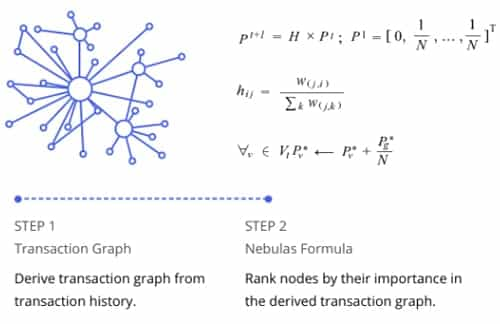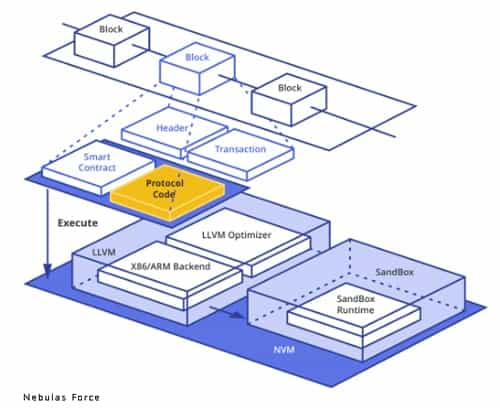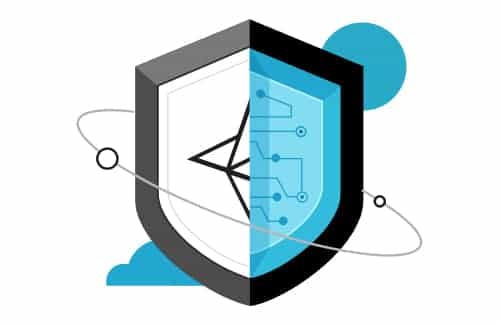Review of Nebulas (NAS): Making the Internet Decentralised
Nebulas is a fairly new project, but it has been moving very quickly.
The team behind the Nebulas project hopes to create a self-evolving blockchain that is incentive based for users and will provide a decentralized platform that provides search capability for all existing blockchains.
Nebulas was founded in early 2017 in Singapore, and while the search feature has been the most highlighted aspect of the project, Nebulas is also working toward upgradable smart contract capabilities – two things not possible with Ethereum.
With its focus on search, some have begun referring to Nebulas as the Google of the blockchain. That isn’t really accurate though, as the two have different use cases. Google is good for finding information on a day-to-day basis, Nebulas will be used to search blockchains for decentralized applications, smart contracts, and blockchain transfers and assets.
Nebulas was initially created as an ERC-20 token, but as of May 2, 2018 the team has announced the release of the native NAS coin on the mainnet.
Nebulas has declared its mission to:
lead us to a better life with a higher level of freedom and equality.
It hopes to do this by facilitating the turning of public data into private data, eliminating the chances of large corporations like Google, Amazon, and Facebook from analyzing / profiting from said data.
Key Nebulas Features
- Nebulas Rank (NR): It sets up a universal blockchain measure of value. For example, you’ll be able to check the highest rated DApps and make better judgments.
- Nebulas Force (NF): Developer friendly solution that supports protocols/smart contracts flexibility. This helps the blockchain adapt to market demands and stops “forking” from occurring.
- Developer Incentive Protocol (DIP) / Proof of Devotion (PoD): System to award developers with NAS for their contributions. It supports fairness and the best interests of these developers.
- Search Engine: It helps users find desired data (such as decentralized applications & smart contracts) in a massive market.
- Lightning Network Wallet: Essentially atomic swaps. You’ll be able to “swap” your NAS for any lightning network enabled coin.
Nebulas Team
The Nebulas website lists over a dozen main team members, but the creation of Nebulas can be laid at the feet of just three of those. The principle founder and CEO of Nebulas is Hitters Xu, who also founded AntShares (now NEO).

He is considered to be one of the pioneers of blockchain technology, and was also the founder of the first blockchain community in China in 2013, known as BitsClub. Perhaps most notable in connection with the founding of Nebulas is that he also aided Google’s Search & Anti-Fraud team.
His co-founders are Robin Zhong and Aero Wang, and they each bring years of blockchain experience to the Nebulas project. Zheng was the architect of Ant Financial’s Blockchain Platform and was also the founder of Tongxinclub, the first blockchain support platform in China.
As for Wang, he was the co-founder of Antshares (NEO) with Xu and has been an influential blockchain entrepreneur.
The three advisors (Edith Yeung, Chris McCann, and Evan Cheng) to the project are also influential members of the business/blockchain communities. Yeung is an avid tech investor, a partner at 500 Startups, and has been featured in Inc’s Magazine article “The Silicon Valley Investors You Need to Know in 2016”.

McCann established the community program at Greylock Partners (investors in Coinbase, FB, Airbnb, Linkedin, etc). Moreover, McCann was an early advisor for the Thiel Fellowship at Stanford University and was a co-founder of StartupDigest.
Last but not least, Cheng is an engineering director at Facebook with a prior 10-year development career at Apple. He’s received the ACM Software System Award for his contributions to computer science.
These are just a few highlights of the overall Nebulas team. For further details on the project’s employee base, check out their official team page here.
Goals for Nebulas Ecosystem
The Nebulas ecosystem has several goals. One is to define a rank value, which is meant to measure the value of the underlying data on a blockchain. The team feels this is a necessary step towards unlocking more value from blockchains.
The ecosystem is also being created to be developer friendly, with an incentive system that pays the best developers in NAS, and helps set the Nebulas ecosystem for success. And ultimately they want the blockchain to evolve automatically, thus continually delivering faster computing, more powerful systems, and a better user experience. Below are descriptions of some of the key terms used within the Nebulas ecosystem:
What Is Nebulas Rank?

Perhaps the most important feature of Nebulas is the Nebulas Rank, which is the ranking algorithm that is used to measure value in blockchains.
The algorithm is open source, and it is based on the liquidity of the chain, interaction between users, and the propagation of user assets. It can be used to rank various blockchain entities, including smart contracts, distributed applications, and of course individual addresses.
What Is Proof-of-Devotion?
Proof-of-devotion (PoD) is the consensus algorithm developed for Nebulas and based on the Nebulas Rank. PoD will allow the most influential users on the blockchain to become bookkeepers, and when they accept this role they can earn block rewards and transaction fees, which incentivizes them to continue providing for the stability and security of the blockchain.
The PoD algorithm includes the concept that users with a Nebulas Rank value above a given threshold can pay a security deposit to participate in bookkeeper selection. Bookkeepers oversee block generation, earning the block reward and the transaction fee. Any inappropriate user behavior leads to confiscation of their security deposit and reallocation to other bookkeeper candidates.
What Is Developer Incentive Protocol?
The Developer Incentive Protocol (DIP) is a way to bring developers in and keep them as part of the blockchain by providing incentives for developing smart contracts and Dapps. The DIP provides incentives at prespecified intervals to developers who have Nebulas Rank values above a certain threshold.
The idea is to create a positive feedback loop for the developers community. It appears to be working because as of June 2018 the Nebulas blockchain has nearly 3,000 Dapps – the most of any blockchain, even Ethereum.
What Is Nebulas Force?

The final core technology powering Nebulas is known as Nebulas Force. This is what will give the Nebulas blockchain the ability to self-evolve. This will allow for bug-fixes, new technology and general changes without hard forking the blockchain. This is meant to avoid the disruption that has been caused by forks in other blockchains.
Once the Nebulas community grows larger, both the Nebulas Force and the ability for protocols to update will become open to the community. The community will use their voting mechanism and account for Nebulas Rank weight of users to choose the direction the blockchain takes, and which objectives will be pursued.
Technology Nebulas is Working On
There are two other key technologies being developed for the Nebulas blockchain. The first is known as Nebulas Cluster Polymorphous Evolution. This is a forward-looking mechanism that assumes assets and data on the main blockchain will remain safe. It then creates at least one side chain used to verify technological innovations on the blockchain.
The other technology being worked on is known as the Nebulas Wormhole, and it will allow data and assets to be exchanged across sidechains, and between the main chain and any sidechains.
About the NAS Coin
The NAS coin began as an ERC-20 token, but after the launch of the mainnet it became possible to exchange the ERC-20 tokens for native NAS coins. These native coins will be used for operating the Nebulas platform as an in-app currency of sorts.
There will be a finite supply of 100 million coins, and as of June 2018 there is a circulating supply of 45.5 million coins. With the coins continually circulating throughout the platform the team hopes to create an internal economy.
The team held its ICO back in December 2017, raising its goal of $60 million by selling 30% of the coin supply at $2 (0.00272993 ETH) per 1 NAS. Since then the price of NAS has been as high as $15.10, but more recently is at $5.59 (June 11, 2018) primarily due to the depressed cryptocurrency markets throughout the first half of 2018.
Storing & Buying NAS

The original ERC-20 NAS coin was able to be stored in any Ethereum compatible wallet. The new native NAS coin needs to be stored in the NAS wallet. The web version of that wallet is available here. There are also mobile versions of the wallet for both Android and iOS.
One very cool feature was added to the mobile wallet on May 31, 2018 when the software was updated to include a decentralized application (DApp) center — a DApp Store — built directly into the wallet.
With this DApp Store, NAS Nano users can now find and access hundreds of excellent DApps from the Nebulas Incentive Program via their smartphones.
NAS can only be purchased using Bitcoin, Ethereum, or USDT and the largest trading volume by far is on Huobi's Exchange. There is also acceptable liquidity on OKEx, and some small volume trading on Gate.io and EtherDelta.
Conclusion
The development team and advisors at Nebulas comprise one of the stronger teams in the blockchain industry currently. And Nebulas addresses three problems in bockchain technology that need to be solved: the lack of a universal way to measure value on blockchains, the inability of upgrading blockchains without forks, and the lack of an ecosystem that actually supports a great user experience.
The Nebulas team is working with a belief that the number of Dapps will grow increasingly rapidly, and that users will need some way to search through the enormous number of Dapps to find the one they want or need.
The fact that Nebulas already has nearly 3,000 Dapps bears this out. There’s also a need to encourage and assist developers to make the best Dapps possible, otherwise users will simply be flooded with mountains of substandard Daaps.
It goes without saying that this is an ambitious project, but the team has been meeting their goals, and there is a major amount of backing behind the project. It’s been surprising to see that public interest has been slow to come to the project, but this could be due to the vast number of blockchain projects, and the depressed cryptocurrency markets of the first half of 2018.
Nebulas is still performing well, and it will be interesting to see what this project grows into.
Disclaimer: These are the writer’s opinions and should not be considered investment advice. Readers should do their own research.
